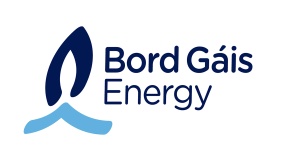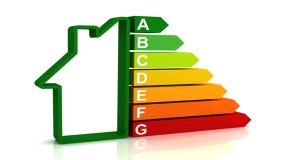- Waste
- Posted
'Recycling' is ending up in the dump
A
number of Ireland's leading recycling companies are dumping significant
amounts of waste from some of their facilities into landfill sites.
Waste
management companies, including Oxigen, Thorntons, Panda and Greenstar,
are all dumping up to 60 per cent of their waste from some of their
facilities into rubbish dumps, according to the latest figures obtained
from the Environmental Protection Agency (EPA).
Details of the companies' activities, including the percentage tonnage that has ended up in the country's landfills, have been specified in each company's EPA Annual Environmental Report 2006.
The Oxigen group has confirmed that almost all of its waste from its Robin Hood facility, and over 60 per cent of waste (35,000 tonnes) from its Dundalk facility, had been consigned to landfill in 2006.
In the same year, of the total waste content that the Thornton's waste management company sent to its facility on Killeen Road in Dundalk, 59 per cent ended up in a landfill, in comparison to the 41 per cent which has been recycled.
However, a spokesperson for Thorntons has stated that the company has since introduced a new line of recycling equipment into the Dundalk site, which has subsequently led to a reduction in the amount of waste consigned to landfill.
Meanwhile, documents submitted from the Panda waste management company to the EPA illustrate how the company's two largest consignments of waste materials had been destined for landfill sites.
In 2006, Panda sent its largest waste load, nearly 37,000 tonnes, to the Whiteriver landfill site in Co Louth, while an estimated 24,000 tonnes, its second largest batch, was sent to the Knockharley landfill in Co Meath.
Although the Panda waste management company said that it was unable to provide a full breakdown of individual figures for each site at the time of going to print, a spokesperson for the company stated, "Our overall recycling rate for 2006 equates to 81 per cent, therefore 19 per cent of our material was landfilled."
He continued, "Currently there is a massive emphasis on recycling waste from our domestic collection in Dun Laoghaire/Rathdown, with 62 per cent of material recycled. This figure should jump dramatically with the introduction of our new free glass household collection which commences in September."
Meanwhile, waste management companies have explained that the significant level of waste which has been consigned to landfill sites is due to the fact that certain types of waste, such as unsegregated municipal waste, cannot be recycled.
Managing director at Oxigen, Peter McLoughlin, says it has an overall recycling rate of 70 per cent.
"In 2006, nearly 64,000 tonnes of municipal waste was delivered to the Robin Hood site, all of which has been consigned to landfill. All of that material went to landfill because you cannot recycle municipal waste, which is unsegregated."
Stephen Cowman, head of Greenstar, which has an overall recovery rate of 66 per cent, says the Government also has to take a certain amount of responsibility for the low recycling rates at certain sites in Ireland.
"In a recent Forfas report, we ranked among the lowest of the 10 companies that they had actually benchmarked in terms of our waste management infrastructure. So we're coming from a zero base here and the low recovery rate is symptomatic of the fact that we just don't have the right levels of infrastructure in Ireland."
The figures come just a week after it was revealed that the national recycling scheme is under threat because Government targets on waste here have not actually changed in 10 years.
(c) Irish Independent
Details of the companies' activities, including the percentage tonnage that has ended up in the country's landfills, have been specified in each company's EPA Annual Environmental Report 2006.
The Oxigen group has confirmed that almost all of its waste from its Robin Hood facility, and over 60 per cent of waste (35,000 tonnes) from its Dundalk facility, had been consigned to landfill in 2006.
In the same year, of the total waste content that the Thornton's waste management company sent to its facility on Killeen Road in Dundalk, 59 per cent ended up in a landfill, in comparison to the 41 per cent which has been recycled.
However, a spokesperson for Thorntons has stated that the company has since introduced a new line of recycling equipment into the Dundalk site, which has subsequently led to a reduction in the amount of waste consigned to landfill.
Meanwhile, documents submitted from the Panda waste management company to the EPA illustrate how the company's two largest consignments of waste materials had been destined for landfill sites.
In 2006, Panda sent its largest waste load, nearly 37,000 tonnes, to the Whiteriver landfill site in Co Louth, while an estimated 24,000 tonnes, its second largest batch, was sent to the Knockharley landfill in Co Meath.
Although the Panda waste management company said that it was unable to provide a full breakdown of individual figures for each site at the time of going to print, a spokesperson for the company stated, "Our overall recycling rate for 2006 equates to 81 per cent, therefore 19 per cent of our material was landfilled."
He continued, "Currently there is a massive emphasis on recycling waste from our domestic collection in Dun Laoghaire/Rathdown, with 62 per cent of material recycled. This figure should jump dramatically with the introduction of our new free glass household collection which commences in September."
Meanwhile, waste management companies have explained that the significant level of waste which has been consigned to landfill sites is due to the fact that certain types of waste, such as unsegregated municipal waste, cannot be recycled.
Managing director at Oxigen, Peter McLoughlin, says it has an overall recycling rate of 70 per cent.
"In 2006, nearly 64,000 tonnes of municipal waste was delivered to the Robin Hood site, all of which has been consigned to landfill. All of that material went to landfill because you cannot recycle municipal waste, which is unsegregated."
Stephen Cowman, head of Greenstar, which has an overall recovery rate of 66 per cent, says the Government also has to take a certain amount of responsibility for the low recycling rates at certain sites in Ireland.
"In a recent Forfas report, we ranked among the lowest of the 10 companies that they had actually benchmarked in terms of our waste management infrastructure. So we're coming from a zero base here and the low recovery rate is symptomatic of the fact that we just don't have the right levels of infrastructure in Ireland."
The figures come just a week after it was revealed that the national recycling scheme is under threat because Government targets on waste here have not actually changed in 10 years.
(c) Irish Independent
Last modified on Tuesday, 04 March 2008 22:15
Related items
-
 Saint Gobain launches online technical academy
Saint Gobain launches online technical academy -
 Bord Gáis calls it quits on home insulation business
Bord Gáis calls it quits on home insulation business -
 Two thirds of new Irish homes fail energy efficiency rules
Two thirds of new Irish homes fail energy efficiency rules -
 Brian Motherway named new chief executive of SEAI
Brian Motherway named new chief executive of SEAI -
 Government launches public consultation on building control
Government launches public consultation on building control -
 Fuel poverty finally taken seriously - Energy Action
Fuel poverty finally taken seriously - Energy Action

